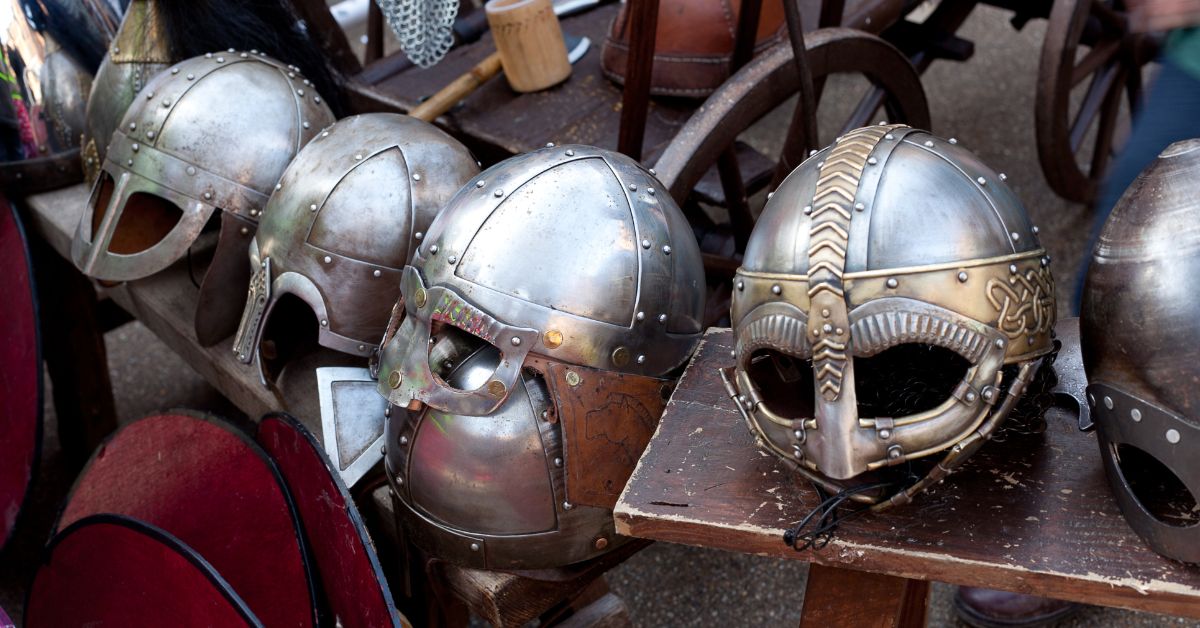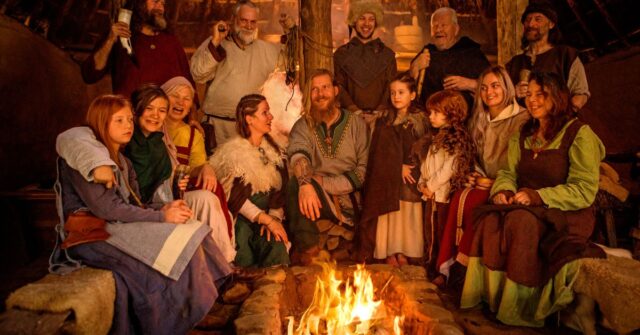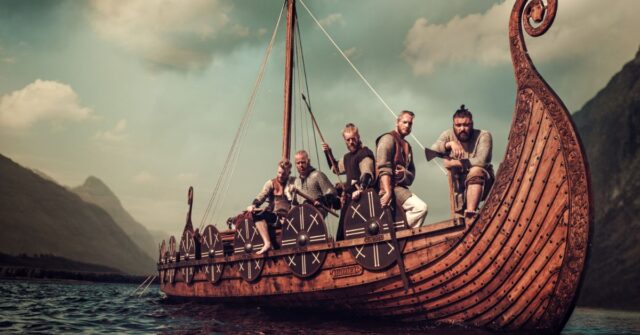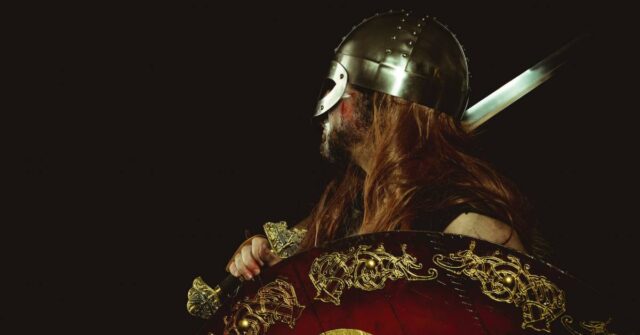The image of Vikings storming into battle with horned helmets is deeply ingrained in popular culture. However, the reality of Viking helmets is quite different.
In this post, we’ll explore the myths and truths surrounding Viking helmets, providing a comprehensive look at their historical accuracy, design, and cultural significance.
Introduction
Viking helmets have fascinated historians and enthusiasts alike. The combination of myth and reality creates a rich tapestry of history that demands exploration.
This blog post will dissect these elements to uncover the true nature of Viking helmets.
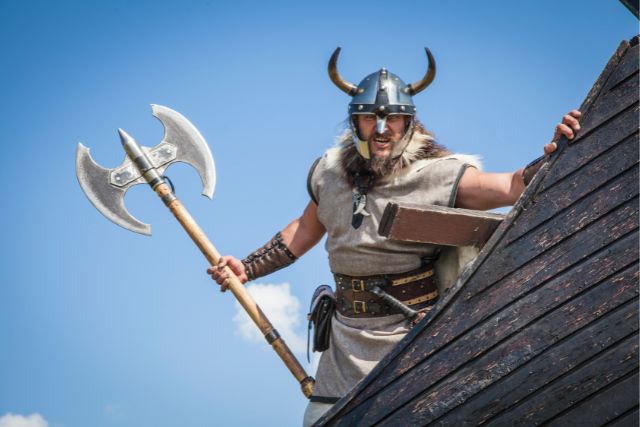

The Myth of Horned Helmets
The iconic image of horned Viking helmets has been perpetuated by various forms of media and pop culture.
This myth has overshadowed the historical facts for years, leading to widespread misconceptions.
Origins of the Horned Helmet Myth
The myth of horned helmets began in the 19th century when costume designer Carl Emil Doepler created horned helmets for Wagner’s opera “Der Ring des Nibelungen.”
This imagery caught on and was further popularized by various artworks and performances. However, there is no archaeological evidence supporting the use of horned helmets in Viking warfare.
Popular Culture and the Persistence of the Myth
Films, television shows, and comic books have all contributed to the persistence of the horned helmet myth.
Characters like Asterix and the Minnesota Vikings mascot have cemented this image in the public’s imagination.
Despite efforts by historians to debunk this myth, it remains a powerful symbol of Viking imagery.
Historical Viking Helmets
Understanding the true nature of Viking helmets involves examining the archaeological evidence and historical records.
The actual design and construction of these helmets were practical and functional, suited for the rigors of battle.
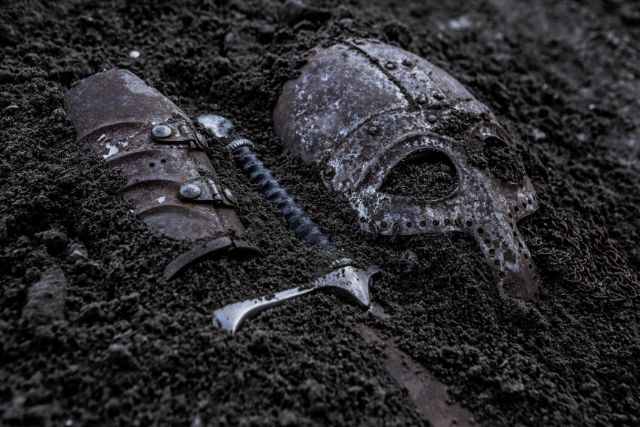

The Gjermundbu Helmet
The Gjermundbu helmet, discovered in Norway, is the only complete Viking helmet ever found. This helmet features a rounded cap, a brow-band, and a nose guard.
It is constructed from iron and demonstrates the practical design used by Vikings for protection in battle.
Materials and Construction
Viking helmets were primarily made from iron or steel, providing durability and protection. The construction techniques included riveting and the use of multiple plates to create a sturdy design.
Leather caps were also used by those who could not afford metal helmets, offering less protection but still serving as headgear.
Design and Functional Features
The design of Viking helmets was focused on protection and functionality. Key features included nose guards, rounded or peaked caps, and sometimes chainmail aventails for additional protection.
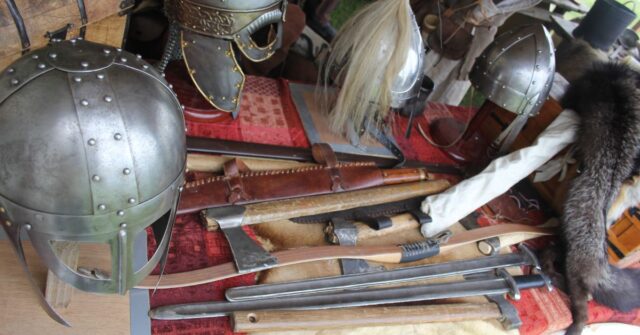

Nose Guards
The nose guard was a prominent feature in many Viking helmets, providing essential protection for the face. This design element helped to deflect blows to the head and face during combat.
Rounded and Peaked Caps
Viking helmets often had rounded or peaked caps. Rounded caps offered better overall protection and comfort, while peaked caps provided an imposing appearance and possibly better deflection of strikes.
Chainmail Aventails
Chainmail aventails were used to protect the neck and shoulders. These were made of interlocking metal rings and added an extra layer of defense, enhancing the helmet’s protective capabilities.
Debunking Common Misconceptions
Despite the evidence, many misconceptions about Viking helmets persist. It’s important to address these inaccuracies to gain a clearer understanding of Viking history.
Evidence from Archaeological Findings
Archaeological findings, such as the Gjermundbu helmet, provide concrete evidence of what Viking helmets actually looked like.
These findings show that Vikings valued practicality and protection over decorative elements like horns.
Scholarly Research and Historical Analysis
Scholars have extensively studied Viking artifacts and historical records, consistently debunking myths about horned helmets.
This research highlights the importance of accurate representation in historical studies.


Cultural Significance of Viking Helmets
Viking helmets were more than just protective gear; they held significant cultural and symbolic value. Understanding this aspect provides a deeper insight into Viking society.
Helmets in Rituals and Ceremonies
Viking helmets were sometimes used in rituals and ceremonies, symbolizing strength and warrior status.
These occasions were integral to Viking culture, highlighting the importance of helmets beyond their practical use.
Symbolism in Viking Society
Helmets symbolized power and bravery in Viking society. They were often intricately designed to reflect the wearer’s status and achievements, serving as a badge of honor among warriors.
Modern Depictions vs. Historical Reality
The contrast between modern depictions of Viking helmets and their historical reality is stark. This section explores how contemporary portrayals differ from actual historical facts.
Influence of Media and Entertainment
Media and entertainment have played significant roles in shaping the modern perception of Viking helmets.
Movies, TV shows, and video games often prioritize visual impact over historical accuracy, leading to widespread misconceptions.
The Impact of Historical Misconceptions
Historical misconceptions can distort our understanding of the past. By perpetuating myths, we risk undervaluing the true accomplishments and cultural significance of Viking society.
Accurate historical representation is crucial for honoring the legacy of the Vikings.
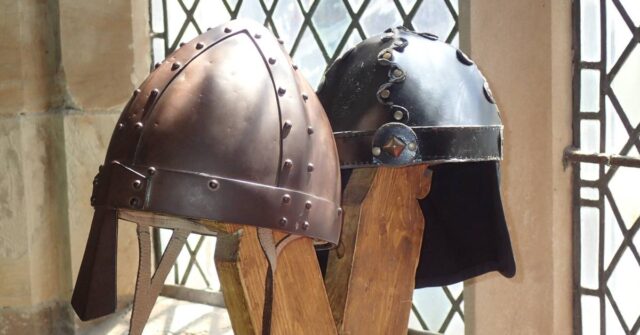

Conclusion
In conclusion, the reality of Viking helmets is far removed from the horned myth perpetuated by popular culture.
By examining historical evidence and understanding the cultural significance of these helmets, we can appreciate the true nature of Viking warfare and society.
Accurate historical knowledge enriches our understanding and allows us to honor the Vikings’ legacy appropriately.
Summarizing the Realities of Viking Helmets
Viking helmets were practical, functional, and designed for protection. The myth of horned helmets, though pervasive, is a modern fabrication with no basis in historical fact.
Understanding the true nature of these helmets provides a deeper appreciation of Viking history.
The Importance of Accurate Historical Understanding
Accurate historical understanding is vital for preserving the integrity of the past. By debunking myths and focusing on factual evidence, we honor the true legacy of the Vikings and their contributions to history.
Let’s continue to explore and celebrate history with accuracy and respect.

